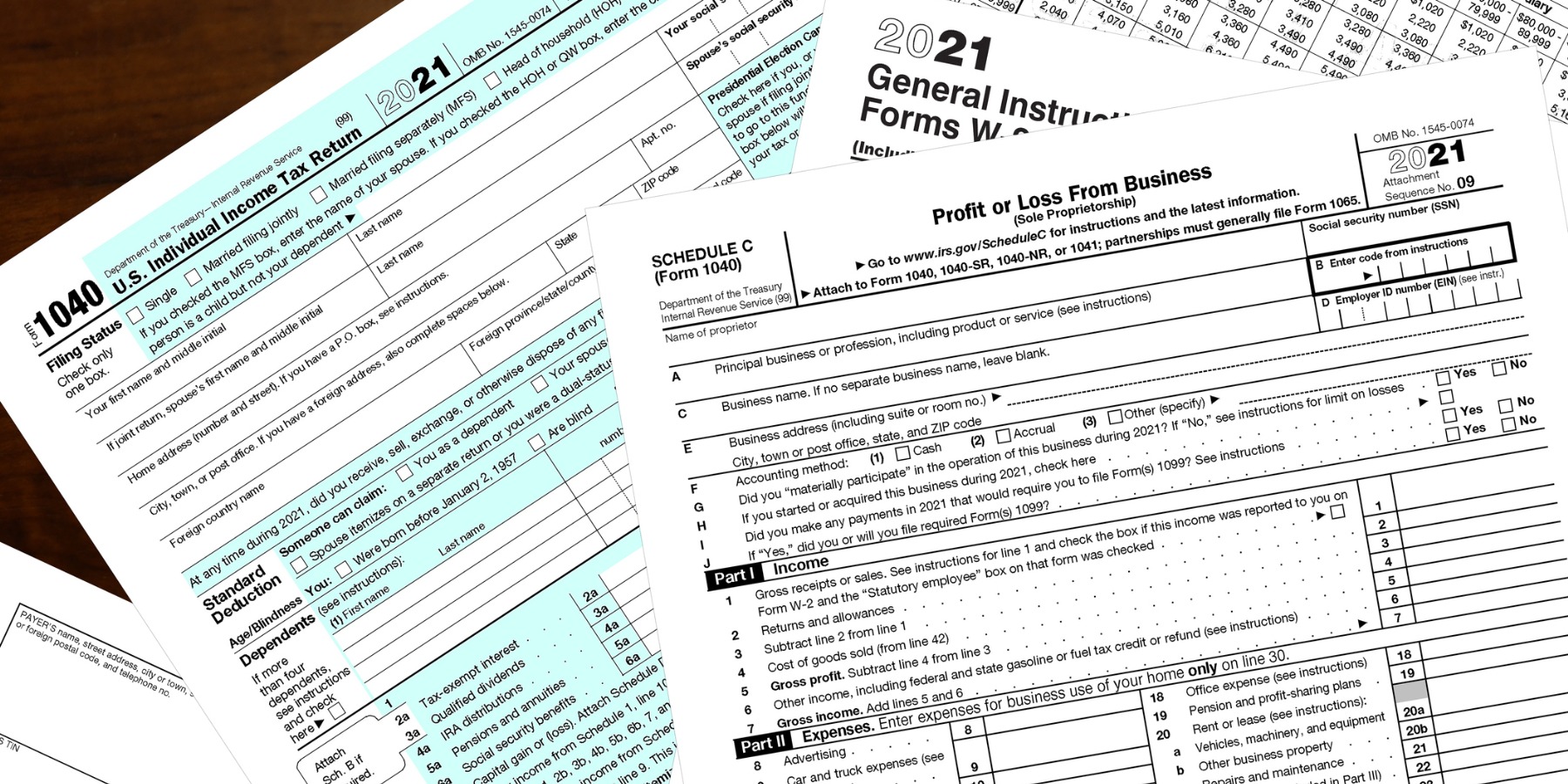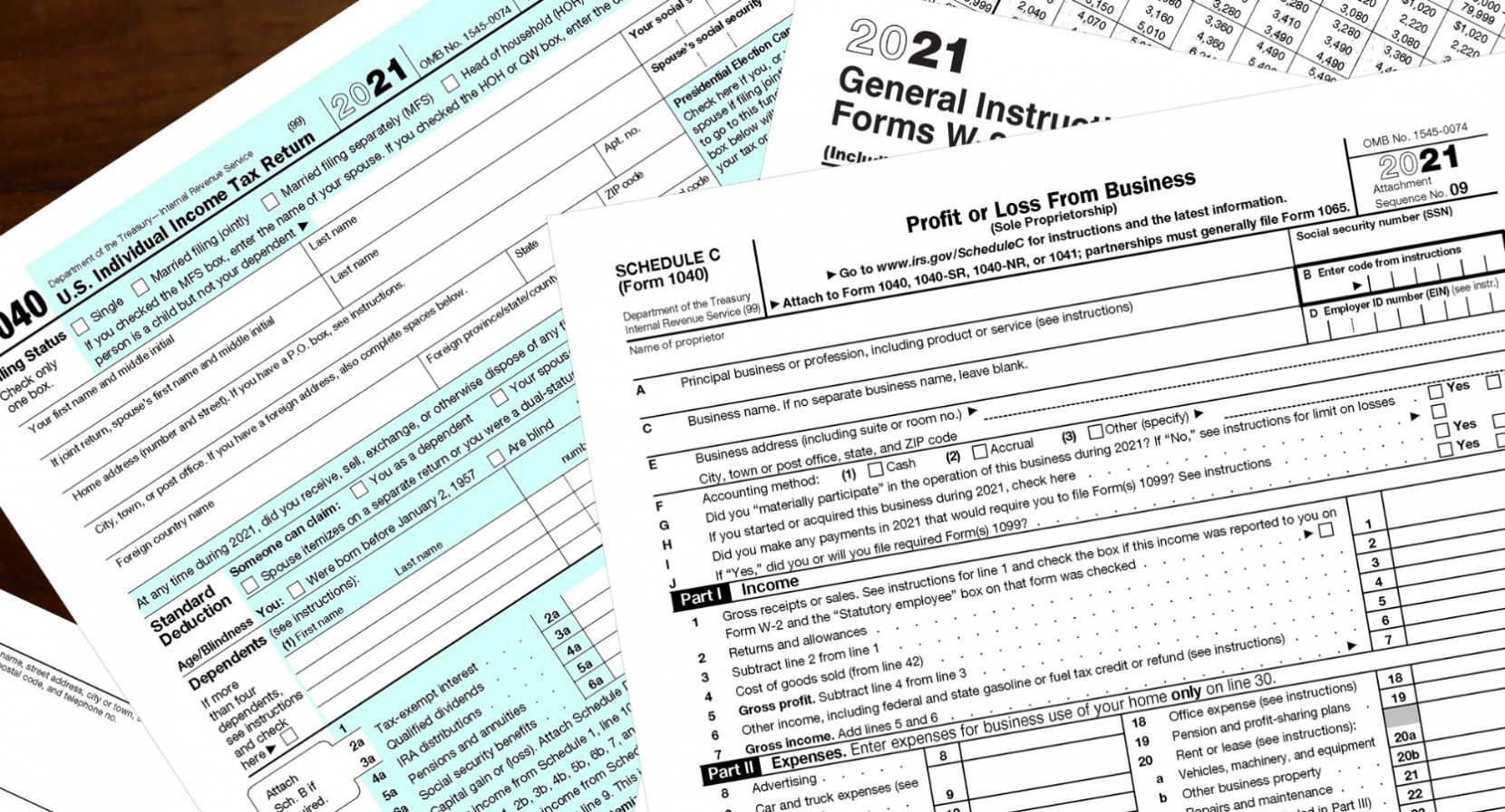The 2022 tax-filing season (for tax year 2021) is underway and — not surprisingly! — this year’s 1040 (PDF) has a few changes.
Kiplinger provides an overview:
Many (but not all) of the new items on the 2021 1040 form come from the American Rescue Plan Act, which was enacted last March. This Covid-relief bill made changes to the child tax credit, child and dependent care credit, earned income tax credit, and more.
Other changes stem from the expiration of earlier Covid-related provisions that expired at the end of 2020.
There are a few modifications to some of the main 1040 schedules, too. And, of course, there are the normal inflation-based adjustments that occur every year.
Let’s take the last of those items first — the inflation adjustments. Filers have larger standard deductions for this tax season, but the adjustments aren’t as large as you might expect. That’s because they were set in late 2020 — before inflation began to ramp up significantly. The 2021 amounts are:
Single, or Married Filing Separately: $12,550 (up $150 from the 2020 tax year);
Married Filing Jointly, or Qualifying Widow(er): $25,100 (up $300); and
Head of Household: $18,800 (up $150).
Married taxpayers over 65 (or blind) can tack on another $1,350 to the standard deduction. Those over 65 and single (or head of household) can add even more — they can bump up the standard deduction by $1,700.
Because of inflation adjustments, tax-bracket thresholds have shifted slightly for 2021 taxes, both for the income tax and the long-term capital gains tax. For those numbers, go to SMI’s 2021 Federal Tax Information page.
The child tax credit
A tax credit for families with children has been around since the late 1990s, but the credit changed significantly with the American Rescue Plan Act in 2021.
Instead of simply receiving a Form 1040 credit to apply against one’s tax liability (the way the tax credit was implemented for more than two decades), the child tax credit for 2021 took the form of direct monthly cash payments to families with children under the age of 17.
When preparing their 2021 tax forms, taxpayers who received such payments must subtract the total amount they received from the total allowable credit. If the allowable credit is greater than the combined monthly payments, a taxpayer can claim the remainder of the credit on the 1040 form. However, if the allowable credit is less than the payments already received, the taxpayer may have to pay back a portion of the cash accepted during 2021.
Confused? Check out Kiplinger’s "Child Tax Credit FAQs for Your 2021 Tax Return."
Changes related to charitable giving
Recent years have seen multiple changes in the tax deduction for charitable giving. As you may recall, the 2017 tax law nearly doubled the standard deduction, meaning fewer taxpayers had an incentive to itemize deductions. Therefore, fewer were able to take a deduction for giving to charity.
When COVID hit in 2020, Congress added a $300 cash-donation deduction for non-itemizers — and made it an "above the line" deduction. In other words, taking the deduction lowered one’s "adjusted gross income." That’s important because the government uses a taxpayer’s AGI to calculate how much one pays for Medicare premiums and determine whether one’s Social Security benefits are taxed.
This year (i.e., tax year 2021), the charitable-giving deduction for non-itemizers is "below the line" — it will not reduce AGI. For most taxpayers, that probably won’t matter. But for someone near the income threshold for higher Medicare premiums or Social Security taxation, it could make a big difference.
There is a happier change: The charitable-giving deduction for non-itemizers has doubled for joint filers. Last tax season, married couples who filed jointly could take one $300 deduction. For 2021 tax returns, a $300 deduction is allowed per person, or $600 total. Keep in mind that this deduction is limited to cash contributions.
(For 2022, the charitable-giving deduction for non-itemizers will go away entirely — unless Congress makes yet another change!)
Education-related provisions
The tuition-and-fees deduction, worth up to $4,000, is no more. But a credit related to education expenses is now available to more taxpayers. That’s because the income threshold for eligibility for the "lifetime learning credit" has increased significantly.
The IRS has more on the credit:
The lifetime learning credit (LLC) is for qualified tuition and related expenses paid for eligible students enrolled in an eligible educational institution. This credit can help pay for undergraduate, graduate and professional degree courses — including courses to acquire or improve job skills.
There is no limit on the number of years you can claim the credit. It is worth up to $2,000 per tax return.
For 2021 taxes, the full $2,000 credit is available for couples with incomes up to $160,000 — compare that to the much lower threshold of $118,000 in tax year 2020. The amount of the credit phases out gradually between $160,000 and $180,000, when it disappears.
The phase-out range for single taxpayers is between $80,000 and $90,000 in income.
The 2021 changes mean the income-level phase-outs for the Lifetime Learning Credit are now the same as for the American Opportunity Credit (an annual $2,500 credit for the first four years of higher education).
Asking about crypto
The IRS has added this verbiage to the new 1040 — near the top of the form, right underneath the name and address fields: "At any time during 2021, did you receive, sell, exchange, or otherwise dispose of any financial interest in any virtual currency?"
Read the question carefully. It does not refer to buying cryptocurrency. The 1040 instructions explain:
If your only transactions involving virtual currency during 2021 were purchases of virtual currency for real currency, including the use of real currency electronic platforms such as PayPal and Venmo, you are not required to check the “Yes” box next to the virtual currency question.
[However, you] must not leave the field blank even if you are not required to answer “Yes.”
If you disposed of any virtual currency that was held as a capital asset through a sale, exchange, or transfer, check “Yes” and use Form 8949 to figure your capital gain or loss and report it on Schedule D (Form 1040).
One other thing to keep in mind is that some crypto-related income, such as interest and "airdrops" (free cryptocurrency offered as a sign-up incentive), is treated by the IRS as regular income rather than capital gains.
A change in this year’s filing deadline
One of the most significant changes this year (for procrastinators anyway!) is that the 2022 tax-filing deadline is not the traditional day of April 15 but April 18. Why?
The IRS explains: "The due date is April 18...because of the Emancipation Day holiday in the District of Columbia — even if you don’t live in the District of Columbia."
But as with almost everything related to taxes, there is an exception to the general rule. "If you live in Maine or Massachusetts," the IRS says, "you have until April 19, 2022. That is because of the Patriots’ Day holiday in those states."









